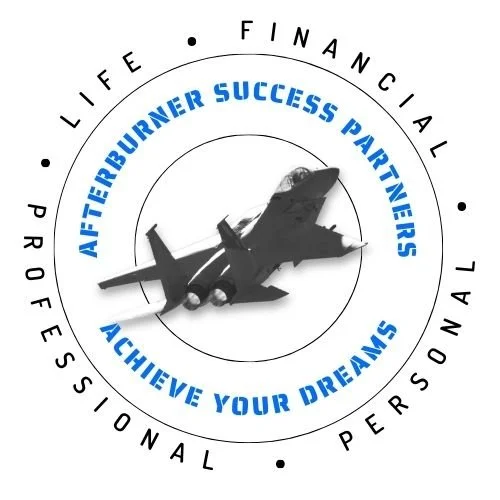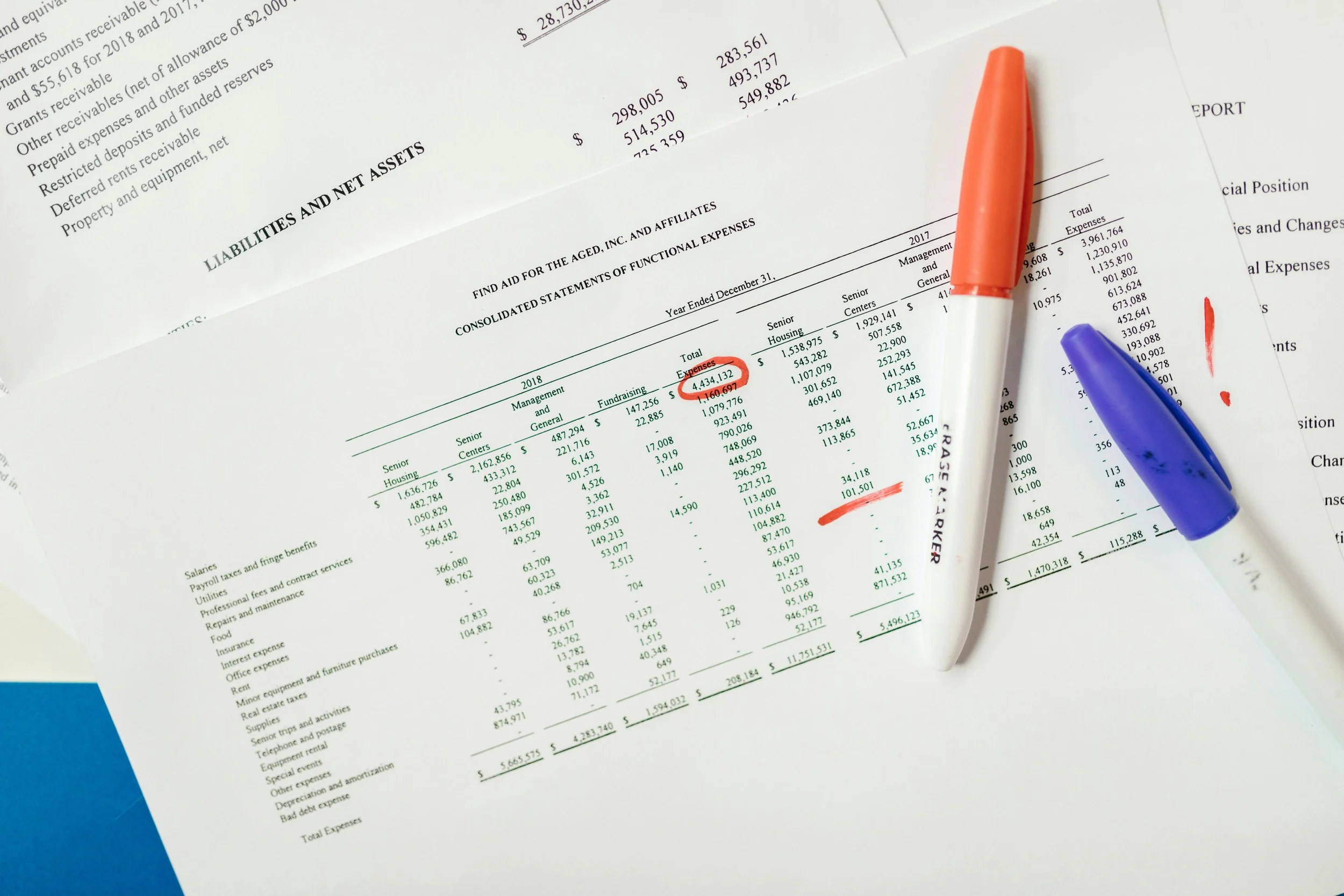The Financial Template
If your business desires to produce consistent, high-quality products, you might use a template. Read on to learn how you can use a template for your own success!
Templates
If you work in the manufacturing industry, you might use what is called a fixture, mold, or template to mass produce a product to standardize production and ensure a high-quality product. If you are in the commercial baking business or food production, you would use standardized tooling, pans, or other accessories to get the exact same results for each product produced. The McDonald’s hamburger and fries you had for lunch were a result of many years making hamburgers and fries to determine the exact process so that whether you have a McDonald’s meal in New York, Los Angeles or on the side of the road in the middle of Kansas, you have the exact same high-quality product. Even the level in your drink cup is the same. The Snickers bar you had for a snack? Same thing. Companies use these processes so each product is of a known characteristic and of high quality to delight their customers.
This same process is available to you as part of the Afterburner Success Partners course to ensure your financial, professional, personal, and lifetime success! So you can achieve your dreams and live your best life!
Once upon a time…
I once visited a business whose primary purpose was to stamp sheet metal parts for two large automotive manufacturers in the United States. The production was largely manual. An operator retrieved a piece of flat sheet metal, called a blank, placed it in the stamping machine with a mold installed, activated a hydraulic press by foot, retrieved the finished product, and placed it on a waiting rack. The tolerances were very tight, and there was essentially zero variability allowed by the customer. In manufacturing, there is typically what is called an upper control limit (UCL) and a lower control limit (LCL), and these define the tolerances of a part and are measured and documented in what is called a control chart. Advanced manufacturing techniques allow this to be done by the equipment and reviewed as needed, typically by manufacturing or industrial engineers (Called ME and IE for short). Documenting each part this way will allow engineers to determine where the process goes off track, identify each non-conforming part, and apply process improvement remedies. If a part measures above or below the limits, it must either be reworked or scrapped and cannot be provided to the customer until it is within specification. Anyone familiar with manufacturing would tell you that reworking or scrapping parts adds to the cost of the part, reduces profit, and slows down production. Out-of-tolerance, non-confirming products are a bad thing.
Back at our metal stamping business, the operator would measure a sample of the finished products after a set number of produced parts, I think about every 100 in this case. If an out-of-tolerance part was detected, they could measure previously produced parts back to the last measured part to determine where the process went off track. In critical to safety operations such as aircraft part manufacturing, a second individual, called an Inspector, would measure the part to validate the quality of the part produced by the operator. This “second set of eyes” was not required in our metal stamping business because the consequences of failure to meet manufacturing standards would only result in an economic failure (increased cost to rework or remanufacture the part) and not a catastrophic failure such as causing a crash. If a part fails inspection, the result of that failure is the extra cost and time required to rework or scrap. In all cases, companies desire to identify errors as early as possible in the manufacturing process and certainly before the part leaves the factory and is delivered to the customer. When a customer discovers a defect, the cost to correct the error at this point is much higher, and reputational damage could occur to the manufacturer.
In our example, to maintain these tight tolerances, the manufacturer had determined the rate at which the mold would wear and replaced it after a set number of operations. Such strict process control allowed essentially 100% quality of the part produced and ultimately delivered to the customer, thus ensuring the lowest possible cost, highest production rate, and highest profit. All companies seek to produce high-quality products to their customers at an economical cost and balance the tradeoff of Production vs Protection (typically thought of as the maximum production volume while still maintaining safety and quality). This is often referred to as the Cost of Quality (CoQ).
The Afterburner Success Partners success differentiator-the template
I have mentioned on several occasions now that at Afterburner Success Partners (ASP), our actions are based upon proven principles that have worked across many years. We know that if followed, the results will be favorable. What makes ASP different is that we not only teach you the best methods to follow, but we have developed a template to document what the correct actions should be, at the correct time, and in the correct amount for a desired result. This desired result is what YOU decide you want to achieve in life.
Specifically, during any of the three forms of the class or the book, you are guided to determine what your finances should be, in particular your retirement goal. For your career, you are guided to develop and achieve your desired career path. We do the same with your personal goals. Finally, we combine them all together as a lifetime plan, custom tailored for each person. We then test that plan and adjust as necessary.
We go further in that we provide a process to measure and assess your results periodically so that you can course correct, if necessary. During the course and in the book, we provide a sample template for you to use as a basis for developing your own customized plan to achieve your dreams and live your best life. Just like our sheet metal stamping operation, when you develop and use the template you develop for your specific wants and desires, your outcome will be very consistent and high quality. Just the way you want it to be!
…or…
As you know, there are many people in life who operate without a plan to achieve what they want. This may seem OK for a period of time as life goes on. Unless and until something goes wrong or by chance, things simply work out OK. Unfortunately, as often happens, one day a person retires or has a financial need that cannot be met, a medical issue, or other financial challenge, and things all come crashing down. We know some of these folks, don’t we?
When I was in the Air Force, my last position was in Quality Control (QC), where I was an Inspector. Typically, because of the experience required to be an Inspector, many of the folks I worked with were at the end of their careers, and QC was the last place they worked before they retired. One of the Inspectors I worked with was excited about retiring from the Air Force and had plans to continue his career working on civil aircraft. Before his scheduled retirement date, he attended a retirement briefing. When he returned, he had a very disturbed look on his face, almost like he was in shock. You see, he had spent his entire 20-year career, hoping, just hoping all was going to work out well without any proactive action on his part. He learned, the hard way, that his Air Force retirement pay was not going to be enough to cover his two daughters’ upcoming college and, because he had not obtained his Airframe and PowerPlant license, he would not be authorized to work on civil aircraft. As a result, he decided to reenlist and continue in a job he was so excited to get away from. Had he just planned and used his previous 20 years better, the Air Force would have paid for most of his required education and training, and he could have lived out his dreams, supplementing his Air Force retirement with another full-time income. Given he was only in his early 40s, upon full retirement age, he could have enjoyed two well-paying retirement incomes.
Templates that are the same but different
We are about to get into the details of using the financial template to develop your financial goals. Templates for professional and personal goals are very similar but slightly different. At the end of the course, we will combine the contents of each of these templates into a lifetime goals template that will be your individual, custom-tailored plan to accomplish all you want in life. What’s not to like? That’s all for this week!
What’s in it for Me
Having the right tools for the job always ensures a better outcome. The Afterburner Success Partners template is the differentiator and your key to success.
Call to Action
Sign up for the course in any of the various forms and buy the book when it’s out.
Recommended Resources
If we want to achieve all we want in life, we must take ownership and take action. No one is going to do it for us. Purchase and read Extreme Ownership by Jocko Willink (Note 1).
The Financial Samurai by Sam Dogen is a finance blogger I follow. One of his recent blogs discusses the mindset of people who take an interest in and own their financial success. Click on the link in Note 2 for a fantastic read!
Up Next
Completing the financial template.
Notes
Please note that as an Amazon Affiliate, I may earn a small commission on the sale of any of these recommended resources.
Extreme Ownership by Jocko Willink: https://amzn.to/4d3x9VJ
The Million Dollar Mindset of Personal Finance Enthusiasts by The Financial Samurai AKA Sam Dogen: https://www.financialsamurai.com/million-dollar-mindset-of-personal-finance-enthusiasts/

